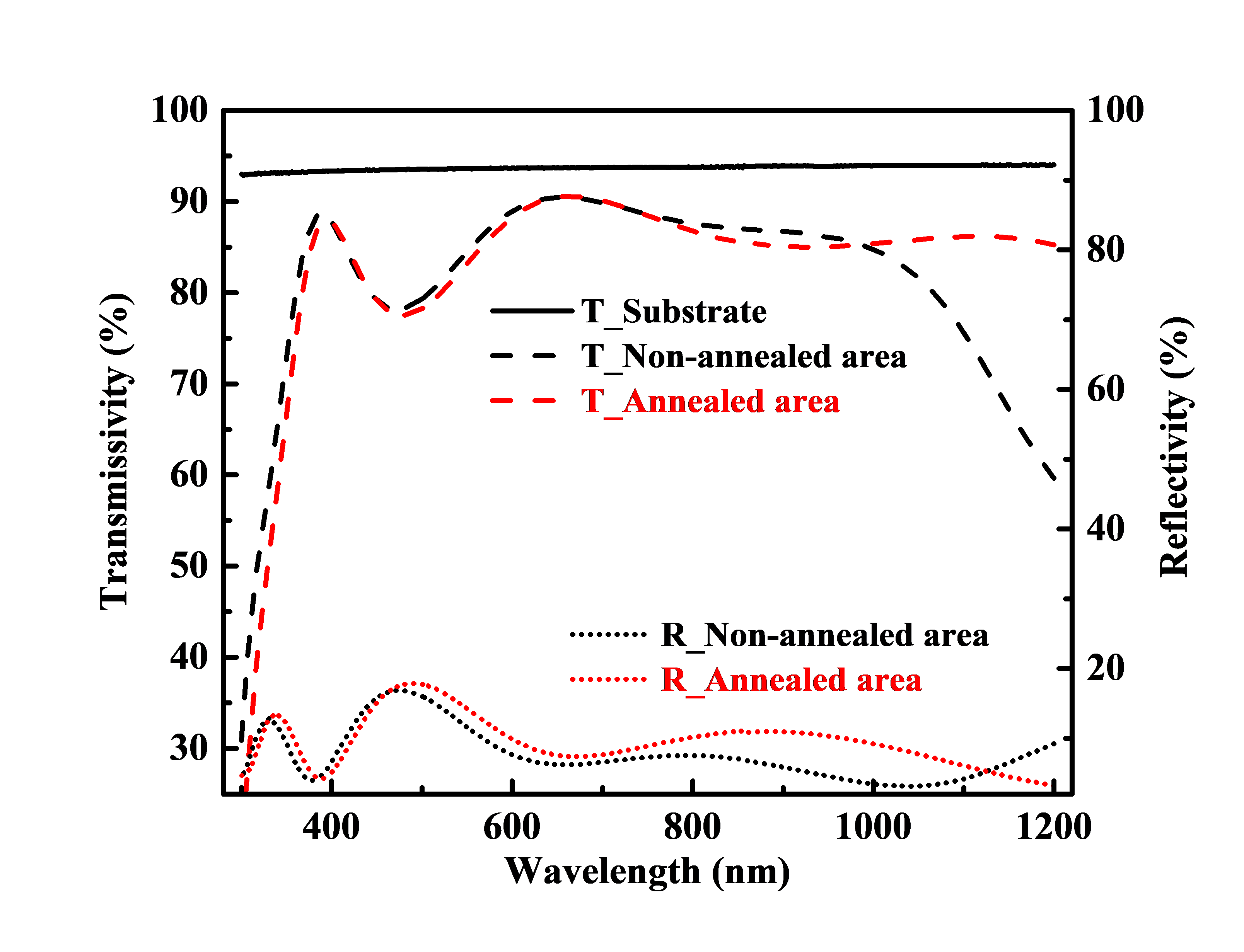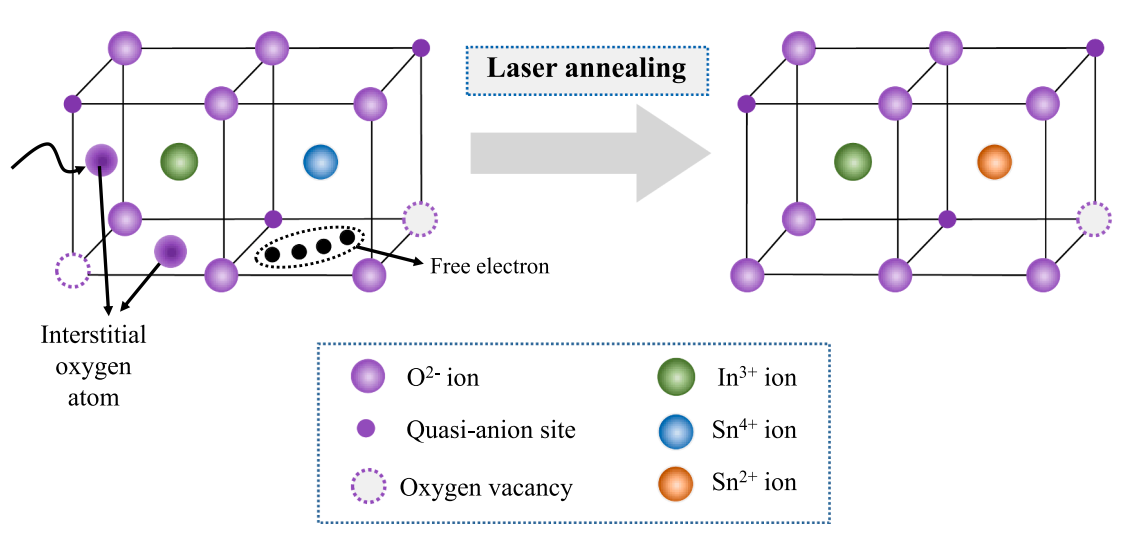Recently, researchers from Shanghai Institute of Optics and Fine Mechanics (SIOM) have made new progress in the tailoring optoelectrical properties of indium tin oxide (ITO) thin films. They used a high-efficiency and selective quasi-continuous (QCW) laser annealing technology to tailoring the carriers of the ITO film and achieved a significant transmittance improvement of the ITO film in the near-infrared (NIR) band while maintaining its original conductivity. The relevant results have been published in Applied Surface Science (Vol. 538, pp. 148104 (2020)).
ITO, a heavily doped and highly degenerate n-type semiconductor with a high carrier concentration, is one of the most important transparent conductive materials. The high carrier concentration of ITO film brings it a good conductivity while significantly decreases its transmittance in NIR band, which results in obvious mutual restriction between transmittance in NIR band and conductivity. This problem limits the research and application of those optoelectronic devices to some extent, such as liquid crystal optical devices, electroluminescent devices, plasma sensors and so on, operating in the NIR band.
Because the conductivity and transmittance in NIR of ITO film are closely related to its carrier concentration, the researchers carried out research on tailoring the carrier concentration of ITO film via QCW laser annealing technology. The results indicate that QCW laser annealing can reduce the carrier concentration effectively and prompts transparency in the NIR region prominently while maintaining its original conductivity. The X-ray photoelectron spectroscopy (XPS) demonstrates that the annihilation of oxygen vacancies and tin oxide reduction processes account for the reduction of the carrier concentration. Tin oxide reduction in the oxygen-deficient zone close to the bottom of the ITO film is more significant than that in the oxygen-rich zone close to the top of the film.
In addition, the elimination of oxygen vacancies in the oxygen-rich environments did not indicate apparent advantage when compared with that in the oxygen-deficient environments owing to the oxygen supplied during the tin oxide reduction process.
This work provides a new perspective to obtain the ITO thin films with excellent photoelectric properties in NIR band that used in the semiconductor field, and clarifies the basic mechanism of QCW laser annealing to regulate ITO thin films carriers in oxygen-enriched and anoxic environments, thus providing important guidance for the research and application of QCW laser annealing technology.
This work was supported by the National Natural Science Foundation of China, the Strategic Priority Research Program of the Chinese Academy of Sciences, and the Open Research Fund of State Key Laboratory of Pulsed Power Laser Technology.

Figure 1 The improvement of transmittance in NIR band of ITO film after QCW laser annealing. (Image by SIOM)

Figure 2 Physical image of the change of the carrier in ITO film. (Image by SIOM)
Article website:
https://doi.org/10.1016/j.apsusc.2020.148104
Contact:
Mr. Wu Xiufeng
General Administrative Office
Shanghai Institute of Optics and Fine Mechanics, CAS
Email: xfwu@siom.ac.cn